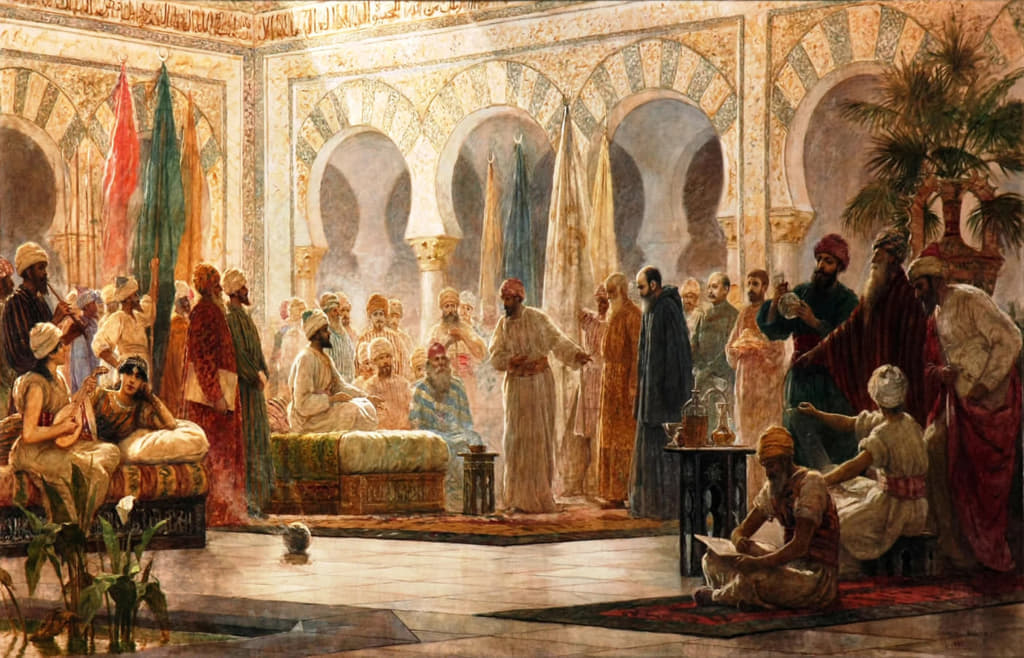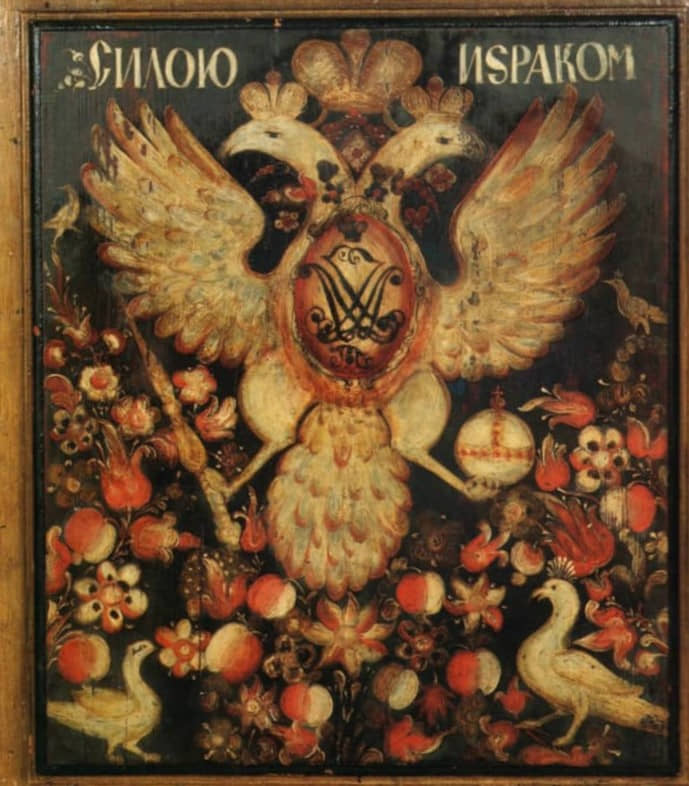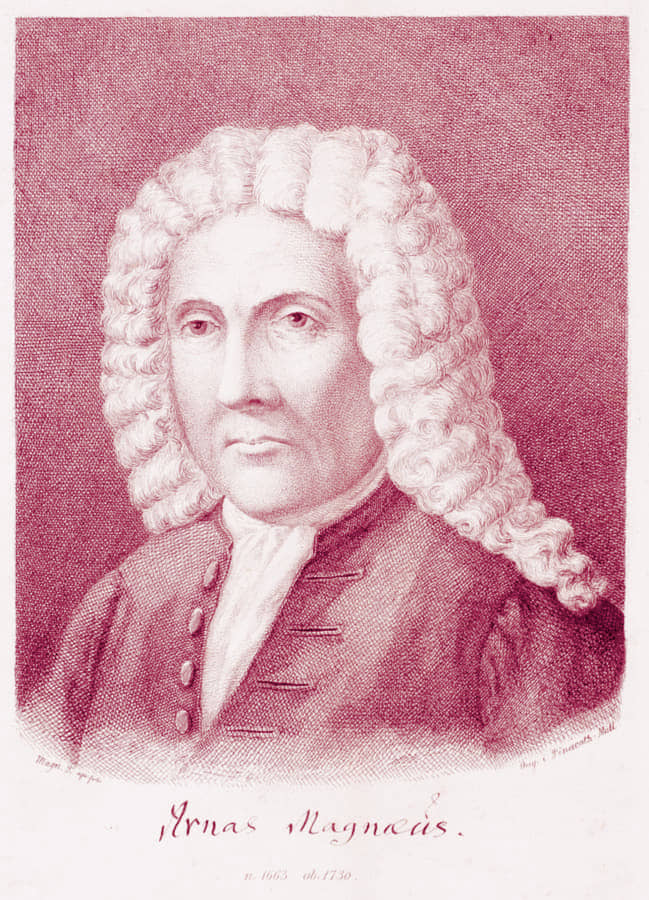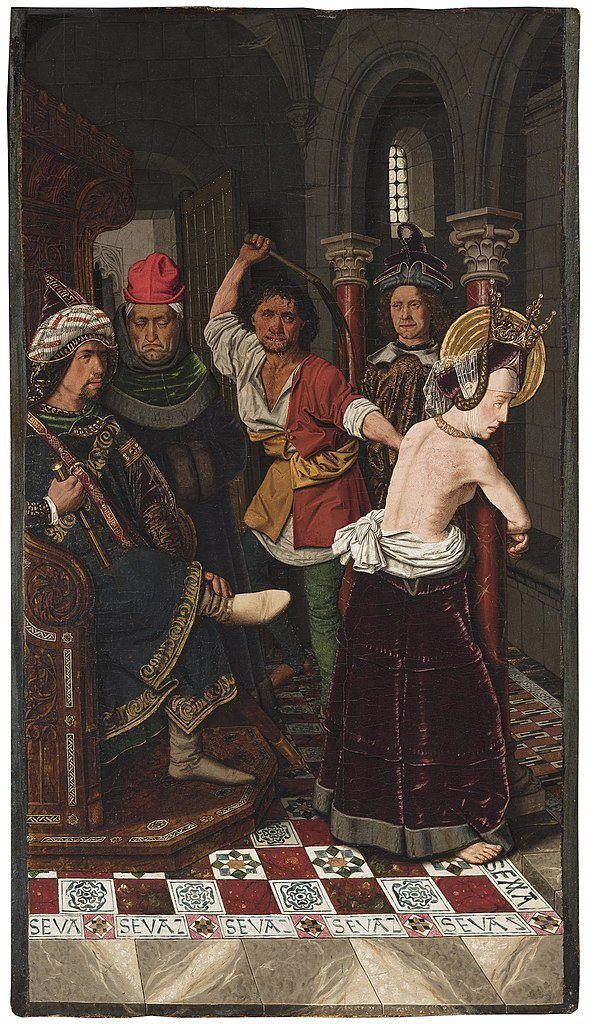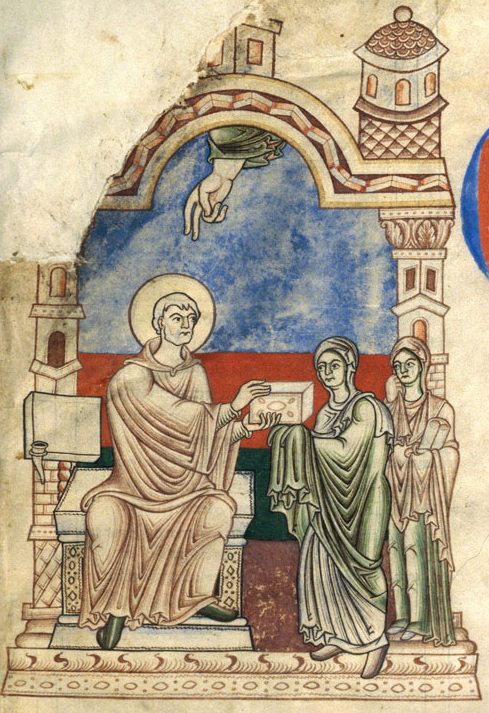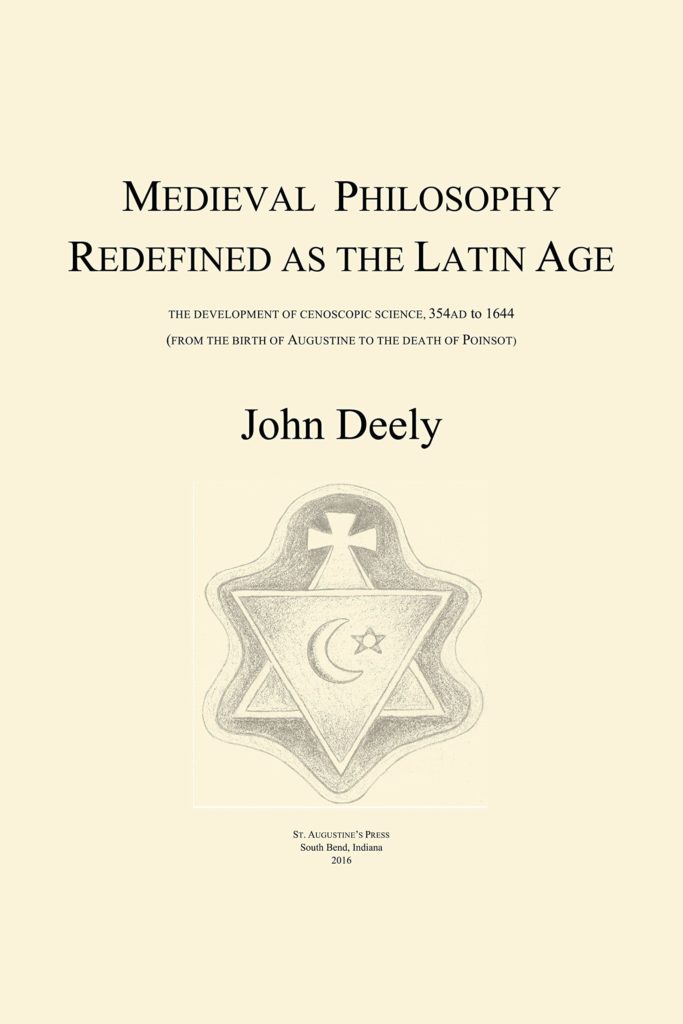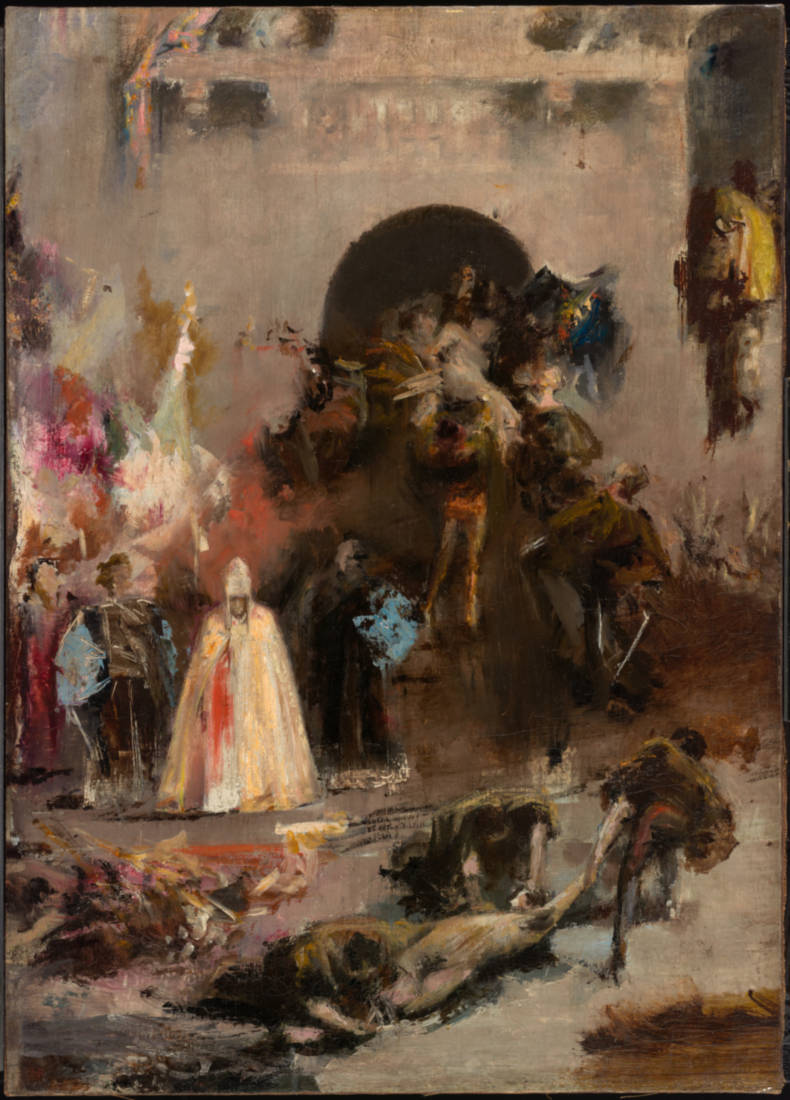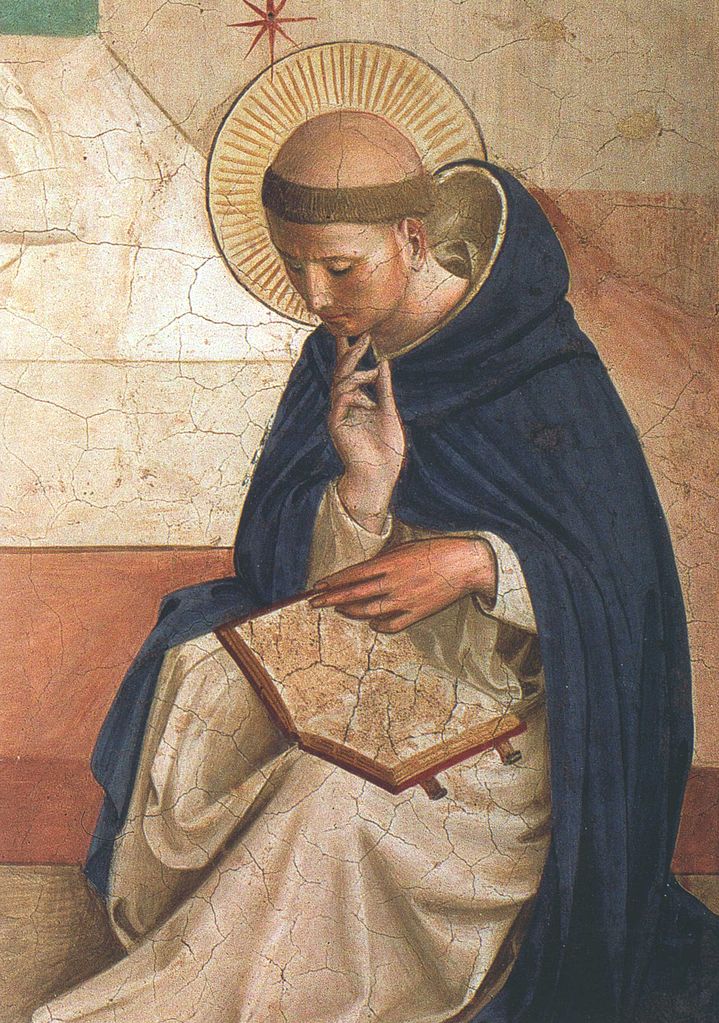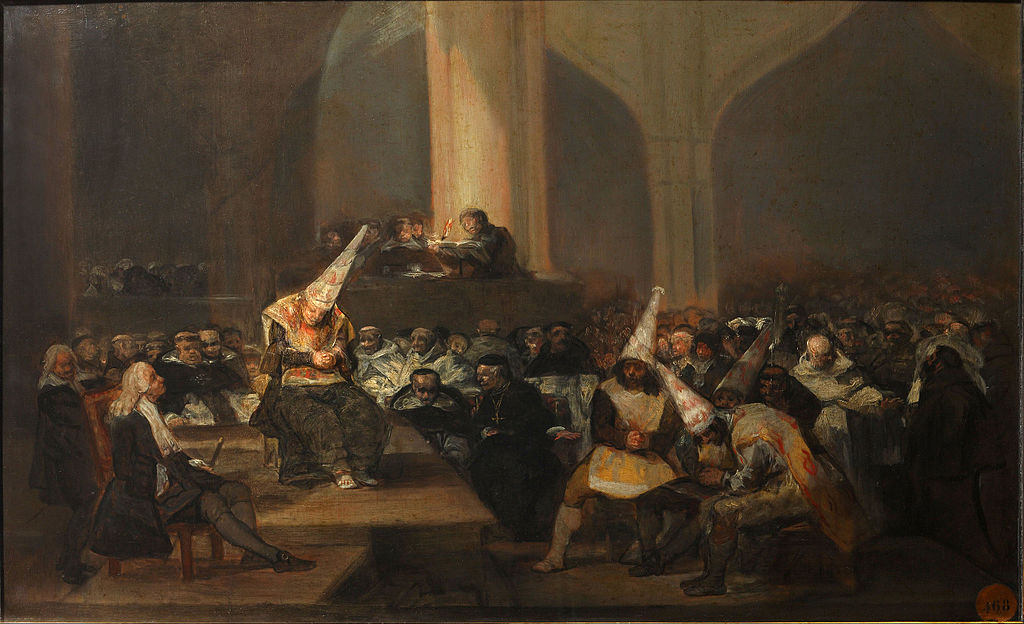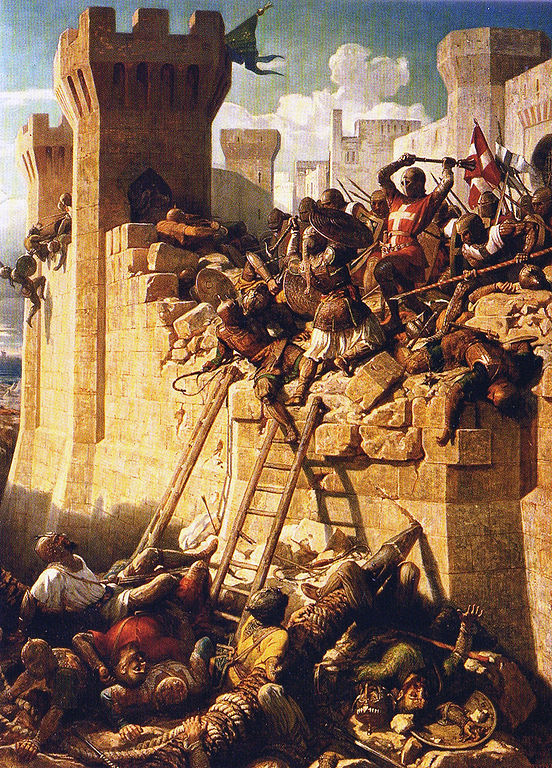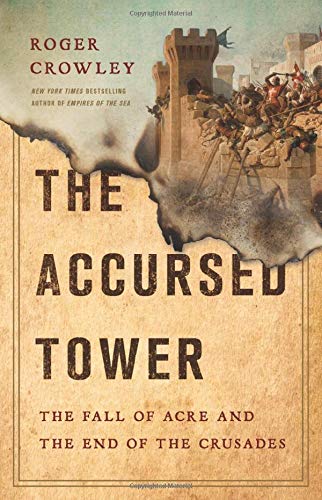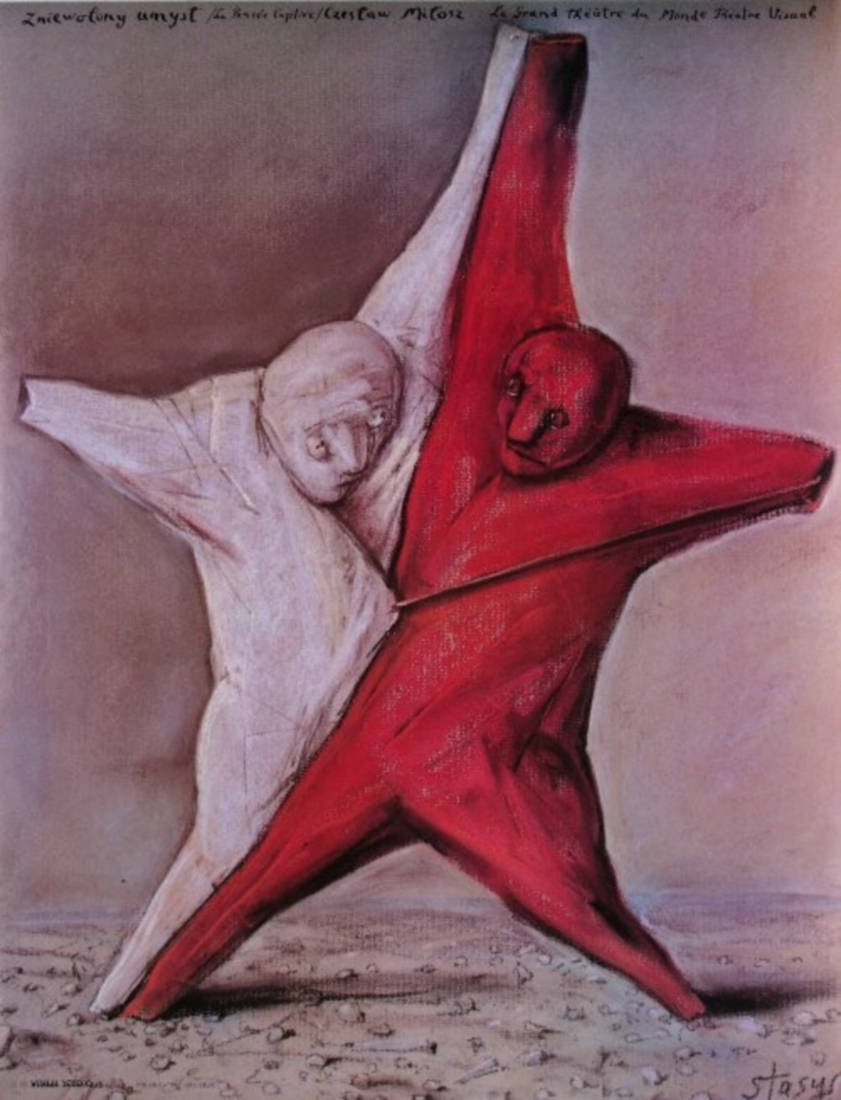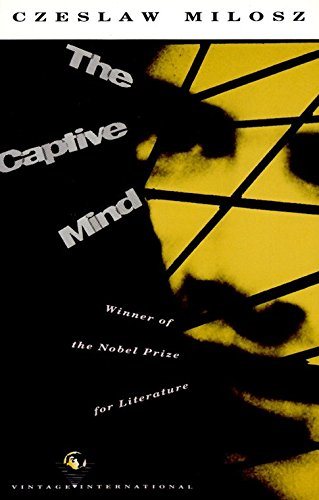1. Al-Andalus Propaganda
The notion of the Convivencia began with the studies of the philologist, Américo Castro, which he put into writing during his American exile. Contrary to the traditional, nationalist discourse of the eternal nature of Spain and the Spaniards, which marginalised the role of Islamic-Arab rule, Castro sought to ascribe a central role in the formation of the “homo hispanicus” to precisely this historical period.
In his first work on this subject, España en su historia. Christianos, moros y judíos which appeared in 1948 and was later reprinted in a revised edition in 1966 and also published in English translation, Américo Castro explained the “convivencia de christianos, moros y judíos” (“the Convivencia of Christians, Moors and Jews”) by way of “tolerancia islámica (“Islamic tolerance”). Castro explained that during the period of the caliphate, this led to a unique fusion of the three religious “castes.” The attitude of the subjugated population was characterised by submission and at the same time by admiration for the superiority of the conquerors; but then also by the endeavour to overcome the position of inferiority, whereby later military victories over the Muslims are said not to have changed their admiration for them.
Kenneth Baxter Wolf, Maya Soifer Irish, Bruna Soravia and especially Eduardo Manzano Moreno have all made insightful contributions to this concept of the Convivencia. Manzano Moreno’s studies show that Spanish al-Andalus experts are on the whole very critical of the Convivencia myth, and have been so since the 1960s. It was and is considered an ideological construct that has neither foundation in real history nor a basis upon the sources available to us.
According to the unanimous assessment of most Spanish historians, Américo Castro had mainly indulged his personal convictions, relying selectively on individual literary passages, while neglecting the available historical sources. Manzano Moreno lists in detail several points of criticism from a historian’s point of view: Castro’s scant interest in the chronological sequence of historical events; the mixing of data from numerous different and distinct periods; the search, taken to an extreme, for parallels, even the most far-fetched, in various literary texts; the far-reaching neglect of all economic factors; and finally, the idea that only native-born Spaniards could adequately understand their own history.
Postmodern and postcolonial humanities scholars, mostly in Anglo-American academia, took up this idea and went on to reinterpret the presumed utopia of the Convivencia as a kind of distribution station for the unimpeded flow of cultural and artistic paradigms from the Arab to the European worlds, as a symbol of a beneficial globalisation process that resisted the narrow-minded local interests of individual nations.
This glorification of al-Andalus goes hand-in-hand with a blatant misjudgment of the real circumstances and events, indeed with a general ignorance of the primary and secondary sources, unless they are available in English. In addition, the unscientific, anti-historical and anti-philological attitudes of many American postmodernists was spurred on by post-colonial studies, especially the completely baseless attacks on European Oriental studies by Edward Said. The most significant representative of such is the late María Rosa Menocal, formerly Sterling Professor of Spanish Studies at Yale.
Menocal used many of the arguments and some of the same examples that Jewish historians of science in the 19th and 20th centuries used to justify the concept of a “Golden Age” in al-Andalus. However, unlike the Jewish historians of science, she consciously employed anachronistic concepts. Thus, for example, when she defines the Middle Ages as being “postmodern” vis-à-vis Modernity, it fits very well with her desire to tell the story “in the lyric mode.” Naturally, this was very popularly received in the mass media and at university campuses, where departments of comparative literature, and especially those of cultural studies, enthusiastically embrace all new fads, such as, postmodernism and postcolonial studies, irrespective of their scientific merit.
Such utopian and idyllic views of Islamic rule in al-Andalus, propagated by Menocal and her followers, are further promoted by mass culture because of political demands for fruitful dialogues between cultures and by the culture industry’s need for simple models and solutions to complex problems. Such tendencies, however, naturally also have an impact on academic studies, as can be clearly seen in the section devoted to the literature of al-Andalus, edited by Menocal, in the Cambridge History of Arabic Literature.
According to Menocal, the resplendent culture of the Court of the Caliphs in 10th century Cordoba is linked to a great respect for the Other and a willingness to accept one’s own contradictions. This, she says, triggered a tremendous creative surge that manifested itself in significant intellectual, artistic and social achievements. The most positive thing about the Islamic tradition would thus have been a resultant attitude that accepted and integrated the most diverse world-views, religions and tendencies without renouncing the particularities of its own identity. One looks in vain in her essay in the Cambridge History of Arabic Literature for evidence that this narrative has any factual foundation in reality.
Unrealistic praise of Islamic Spain is, however, not limited to the academic world. This can also be found on the UNESCO website. Long before 9/11, UNESCO had already granted Convivencia propaganda a large international platform. Al-Andalus in particular was praised as a model of a society with free interreligious dialogue: The “fruitful dialectic between the three great monotheistic religions” led to the flourishing of a universalism in the light of which “the rationalist, philosophical and scientific thought of ancient Iran and Greece” was reformulated, wrote Haïm Zafrani, for example.
Under the auspices of UNESCO, Pierre Philippe Rey (“Al-Andalus: Scientific Heritage and European Thought”) underlines the importance of Andalusia as the crucible of European rationalism. According to him, no figure stands so clearly for this origin as “Ibn Rushd (Averroes) physician, jurist and philosopher;” and also his contemporary “Ibn Maimūn, a Jew by religion (known in mediaeval Europe as Maimonides).” Tolerance and inter-religious cooperation in al-Andalus are also highly praised on the UNESCO page. Mohamed Benchrifa, for example, says: “Throughout the period of Islamic rule, Andalusia… was home to forms of tolerance not observed until modern times. It was a genuine land of dialogue, a dialogue that was both serene and lively.”
A more differentiated view of the historical conditions in al-Andalus (a view certainly not very widespread among Anglo-American academics, such as the humanities scholars mentioned above) can hardly be expected from politicians or Muslim imams. First and foremost, the Islamic terrorist attacks of 9/11 strongly promoted political yearnings to see Islam as a peaceful and tolerant religion, and al-Andalus seemed to offer itself as a historical archetype, a legendary dream-destination of religious tolerance, at least according to academic propaganda.
Therefore, it was only logical for the New York Imam Feisal Abdul Rauf to propose “Cordoba House” as the name for the Islamic centre planned near the destroyed New York towers (now Park51). In this city, after all, “Muslims, Christians and Jews would have co-existed in the Middle Ages, during a period of great cultural enrichment created by Muslims.” He thus indirectly echoed a comparable assessment of Islamic Spain by then President Barack Obama in a speech at Cairo University, in the course of which he referred to the “proud” tradition of Islamic tolerance: “Islam has a proud tradition of tolerance – as we see in the history of Andalusia and Cordoba during the Inquisition.” It was also Islam, Obama continued, that brought forward “the light of learning” and paved the way for the European Renaissance and Enlightenment.
The chronological reference “during the Inquisition” is, of course, nonsensical. The Christian Inquisition was not officially introduced until the end of the 15th century – but its critical mention here is probably intended to make the radiant splendour of a peaceful, tolerant and scientifically productive Islamic rule shine all the brighter in contrast to the Christianised West, which remains “ignorant” of the Islamic roots of its modernity!
2. Islamic Orthodoxy, Intolerance And Violence
However, as Manzano Moreno has already pointed out, the documented history of the period of Islamic rule does not confirm the aforementioned intellectual and political praise of the conditions in Córdoba, since most of the rulers of this period made a name for themselves primarily as strict guardians of intolerant Sunni Malikite orthodoxy. Mention should be made, for example, of the persecution of the followers of Ibn Masarra, the first independent thinker in al-Andalus, the suppression of all Shiite and Ismaili movements; or, in the case of Almanzor, the destruction of the philosophical and astrological books of the great library in Córdoba.Charges of heresy (zandaqa) were brought against theologians, philosophers, literary figures and poets. However, it is not known what the charges consisted of, in detail. In many cases, Muʿtazilite theorists, for example, but also scientists, such as, the Andalusian “Euclid” ʽAbd al-Raḥmān b. Ismāīl ibn Badr, who had made a name for himself in geometry and with a compendium of Aristotle’s Organon, fled to the seemingly more tolerant Orient.
If such violence could erupt within the ruling population group itself, it was all the more a permanent and imminent danger towards those of other faiths. The Arab sources, however, are generally rather silent about them. We learn about the situation of the Christians mainly thanks to the hagiographies of the “voluntary martyrs” of Córdoba, who caused a sensation in the 9th century and were executed during the time of the caliphate.
Violence though was generally nothing out of the ordinary in pre-modern times. This is why it is also to be expected in Islamic societies and hence its idealisation by the Convivencia propagandists is simply out of touch with history. First and foremost, of course, was politically motivated violence, which could also be directed inner-dynastically against one’s own children and family members. This was possible even among the Ṭāʾifa kings of Seville, who are viewed as having been particularly liberal and obsessed with poetry. Veritable orgies of violence and murder in the power struggles characterised the rule of the Naṣrids in the 14th century, who are praised in Convivencia propaganda above all as the builders of the Alhambra in Granada.
During periods of weakened central power, the administrators of the rulers, fighting for influence, then rampaged murderously against each other. In addition to the regular judiciary with its prisons, the Cordovan seat of power, set up its own penal regime which were not controlled by any Islamic judge, and in which, as a rule, no one was supposed to survive. And finally, there were murders not only of Christians but also of the Jewish population, often but not exclusively religiously motivated, especially in the 1066 Granada massacre, in which thousands of Jews perished.
3. Native Christians: From Participation In Public Governance To Oppression And Marginalisation
For several decades, autochthonous Christians and Saracens allegedly shared the church of San Vicente in Córdoba. If it were true, this would speak for tolerance in the context of a conflict-free coexistence in the early days of al-Andalus, i.e., at a time when Sunni Malikite law was not yet known. However, this claim is only found in later Arabic sources.
ʽAbd al-Raḥmān, the first Umayyad emir, is then said to have bought the church from the Christians in 785 and destroyed it in order to build a new house of prayer in its place. The third emir, al-Hakam I, had no confidence in his Arab palace guard in view of the unrest in Cordoba and bought slaves to make a new force, whose commander he appointed the leader of the Cordovan Christians, the Comes Rabiʽ, son of Theodulf of Orléans.
However, the Emir’s son, ʽAbd al-Raḥmān II, had the Christian count Rabiʽ crucified in order to secure the sympathies of at least parts of the Muslim population and the Islamic jurists. Rabīʾ had been accused of misconduct both towards the “faithful” and towards the Christian community. Above all, he was said to have been guilty of having set up a public granary where wine was sold and thus given cause to public transgression. The religiously and morally indignant emir, who was himself known for his dissolute and wine-fuelled festivities, had the granary razed to the ground. The judges, however, had disavowed Rabīʾ both his Christianity and his origin from the indigenous Visigothic population, for he was executed both as an “infidel” (kāfir) and as an ethnic or linguistic stranger (ʿağām).
In the mid ninth century, the famous protests of the Cordovan Christian martyrs occurred. By 858, almost 50 Christians publicly confessed Jesus Christ, rejected Islam as false doctrine and called Mohammed a false prophet. They were all executed. On the one hand, these Christians were monks, including those who had come to Spain from the Orient, that is, priests – but, on the other, also lay people, some of whom came from Christian families; others from mixed Christian-Muslim families. Since the fathers in these families were Muslims, the children were also legally Muslims. So, if they professed Christianity and insulted the Prophet, they had to be punished by death, not only for blasphemy but also for apostasy from the Muslim faith. At least, this is what the Malikite law (discussed below) unequivocally requires. In some cases, their bodies were crucified as a deterrent, and hung on the city gates. However, when it became known that their bones were collected and venerated as relics, the sentences of the executioners stipulated burning them and then scattering the ashes on the Guadalquivir.
John V. Tolan has justified the critical attitude of the voluntary martyrs towards Islam with the argument that they had countered the culture of the colonisers with their own culture of resistance. In doing so, they would have been doing exactly what Edward Saïd defined in Culture and Imperialism as the right of the oppressed to affirm their own oppressed values and culture. This right implied the right to attack the positions of the colonial masters. According to Tolan, the martyr Eulogius used hair-raising insinuations to this end, which could in no way be substantiated by Muslim tradition. As an example, he cited the accusation that Mohammed had announced that he would deflower the virgin Mary in the afterlife. However, this criticism should be countered by the fact that a hadith does indeed report an announcement by Muhammad that God would marry him to the virgin Mary in the hereafter.
Tolan’s justification of the Christian martyrs is an exception in recent historiography. Other, equally serious, historians are not afraid to take the executions of the martyrs as proof that the Muslim “authorities” behaved in a particularly tolerant and profoundly reasonable manner (“…the incident… does show the tolerance and essential reasonableness of the Muslim authorities”). For such friends of al-Andalus, anti-Muslim rebellion and criticism of Islam can apparently only be explained by blindness to reality and ingratitude towards their Muslim masters (For example, Georg Bossong’s Die christliche Märtyrerbewegung gefährdete das gute Zusammenleben zwischen den Religionen (“The Christian martyrdom movement endangered good coexistence between religions”). But on the basis of which set of values are the executioners of the critics of Mohammed to be regarded as particularly tolerant and peaceful?
During the period of the governors and emirs, Christians had long been able to play an increasingly important role in the administration of al-Andalus. This changed with the accession of Emir Muḥammad I (852-886). Even before that though, the ʽulamā had stirred up public resentment against Christians and Jews in high offices. These offices were henceforth finally to be entrusted to Muslims alone. Under Muḥammad I, his Christian secretary Qūmis b. Antunyān therefore converted to Islam. He aspired to the office of vizier and hoped to be able to accommodate this growing anti-Christian propaganda through his conversion, which, however, only affected himself, not his family. But his conversion was considered spurious. He was convicted of apostasy and the Emir therefore confiscated his not inconsiderable property.
Muḥammad I’s policy of weakening the Christians of Córdoba and al-Andalus in general by dividing the clergy bore its first visible fruit at the Synod of 862. Here, there was a split among the bishops, with the forces allied with the Emir initially gaining the upper hand. Bishop Hostegesis, who had been condemned by Abbot Samson (Sansón de Córdoba) for heretical theological teachings, succeeded on this occasion in having Samson himself expelled from the Christian community by the other bishops and barred from all offices when Samson refused to oppose a traditional Spanish antiphon.
Hostegesis had acquired the episcopate of Malaga by purchase at the age of 20. His father, who had previously held it, had converted to Islam in order to avoid conviction for serious fraud against Christians under Christian Visigothic law, which secured him immunity from prosecution. Hostegesis excelled in extreme tax extortion of Christians, which he had had authorised by Córdoba, and squandered the wealth he acquired in this way way, among other things, orgies with high Islamic dignitaries in the capital of al-Andalus. On behalf of the Emir, he worked closely with the head of the Cordovan Christians, Servandus, with whom he had agreed not only to fleece Christians for taxes, but also to spread heresies and propaganda for conversion to Islam.
Most of the bishops, at the insistence of Valentius, Bishop of Córdoba, later withdrew their condemnation of Samson, reinstating him in office. Nevertheless, the power of the Christian enemies Hostegesis and Servandus was not broken. Thanks to the authoritative intervention of Muḥammad I, they unceremoniously deposed Valentius as Bishop of Córdoba and appointed as his successor, supported by Muslim legal advisors, one Stephanus Flacco. A church assembly, to which all the Christians of Córdoba were invited, but most of whom did not appear out of fear and were replaced by Jews as well as Muslims, approved this procedure, which contradicted all canonical regulations.
Thus, Islamic rule, in cooperation with corrupt and heretical bishops, ensured that the organisational foundations of Christian life were increasingly destroyed. It was already being eroded by the pressure to conform and by excessive taxation, as well as by the legal discrimination, which corresponded with the enforcement of Malikite law.
4. Intolerance And Oppression Of Women In Sunni Malikite Law
I. The Introduction And Dominance Of Sunni Sharia Law
In almost all accounts of al-Andalus, the rule of Islam is seen to have lasted from 711 to 1495. However, such a sweeping view undercuts the fact that inscriptional evidence for terms such as “Islam” and “Muslim” from the first half of the 8th century is just as unattested as is the Sunni Malikite law that later shaped jurisprudence in al-Andalus. Contrary to traditional historiography, the latter was not already established by legendary companions of the Prophet or their descendants, nor, as is often reported, by the Syrian Muʿāwiya b. Ṣāliḥ al-Ḥaḍramī (d. 158/774), but only in the 9th century, primarily, though not exclusively, by Ibn Ḥabīb.
Therefore only from the 9th century on could Islamic rulers gradually begin to enforce Malikite law. Then, however, it became binding for the Muslims of al-Andalus for centuries and in this respect became thereafter a defining feature of the Islam that prevailed there. That it would have encouraged tolerance, which is supposedly so characteristic of this Andalusian Islam, is certainly not justified by the code itself.
The most widespread legal treatise here was the Kitāb al-Tafrī (collection of Malikite legislation by the scholar al-Tafrī) from the 10th century, which was translated into an Aragonese-tinged Romanesque using the Arabic script in the 14th century. It retained validity for Muslims even under Christian rulers into the 16th century. The latest manuscript dates from 1585.
Similarly important were: the North African Mudawwana from the 9th century and its supplement, the ʿUtbiyya; the Risāla fī al-Fiqh (10th century); the Maḍāhib al-ḥukkām fī nawāzil al-aḥkām (12th century); Ibn Āṣim al-Andalusī’s (1357-1414) Tuh’fat al- ḥukām fī nukat al-ʿuqoūd wal-aḥkām; and Ibn Rushd’s (1126-1198) – known in the West as the great Aristotelian Averroes – Bidāyat al-Muğtahid wa-Nihāyat al-Muqtasid.
All the works listed refer primarily to the teachings (muwaṭṭa: “The Well-Paved Path”) attributed to Mālik ibn Anas (8th century), cited here according to the compilation transmitted by Yahya Ibn Kathīr al-Andalusī. More often than to Mālik ibn Anas himself, however, the ʿUtbiyya referred to the Malikite jurist Ibn al-Qāsim. In al-Andalus, Malikite law aspired to permeate all aspects of private and public life.
II. Jihad, Ğizya (“Poll Tax”) And Other Forms Of Discrimination Against Non-Muslims
The interpretation of jihad as war to be waged against all “infidels” for the purpose of spreading and defending Islam is often confronted with the objection that jihad first and foremost means, according to the Qur’an, the “inner struggle on the path of God,” i.e., as in an “effort for personal purification and avoidance of evil.” Those who understand this term in this way, however, overlook the fact that this spiritual understanding was a special feature of the Ṣūfīs, i.e., it did not apply to the Sunni world as a whole, in which, by the way, the Ṣūfīs were repeatedly subjected to persecution. This is also true of Muslim Spain.
The military significance of the jihad provision, according to which its aim is to fight the idolaters or the infidels (dār al-ḥarb), is completely undisputed in the literature. Armed struggle for the purpose of spreading Islam can only cease when the whole world is subjected to the rule of Islam (dār al-islam). This is how jihad is understood throughout the early literature from aṭ-Ṭabarī, al-Buḫārī or Ṣaḥīḥ Tirmiḏī to Ibn Saʾd or as-Suyūṭī. From the Sunni perspective, Muslims of other religious observances, such as Shiites or Kharijites, are also considered “infidels,” and thus are to be fought.
The bellicose meaning of jihad described above also existed in Muslim Spain, at least since the introduction of Sunni Malikite law. It unequivocally demands war against infidels unless they submit, and it promises paradise to those who wage this war.
The great Aristotelian Ibn Rushd (Averroes), who was also a jurist in the Malikite tradition, in his writing Bidayat al-Muğtahid also considered jihad as armed struggle, obligatory if the opposing infidels do not accept Islam after being asked to convert. If they do not convert, however, they can be left alive, provided they submit and pay the poll tax (ğizya). It is nevertheless permissible to enslave them, both men or women. But it is also permitted to kill them immediately. According to Mālik Ibn Anas, only the chronically ill, the blind, old people incapable of fighting, the feeble-minded and hermits were exempt. Scholars are not in complete agreement about these exceptions, however. If golden crosses were found in churches during the conquest, they were to be broken before being distributed to the soldiers as booty. The holy books of the Christians, however, should be made to disappear.
Such intolerant rules do not really need any further comment. They show manifestly enough that it was not “Islam” to which we owe the development of European rationalism, for which, according to the UNESCO website, Ibn Rushd/Averroes is a prime representative. For him, “Islam” is clearly defined by the deeply intolerant Malikite law.
The poll tax (ğizya) was not an invention of the Muslims. What distinguished the Muslim poll tax from the taxation practised in the Roman Empire, for example, was its religious discriminatory function. It did not exist for Muslims, but only for “protected” (better, “tolerated”) infidels or ḏhimmīs. Mālik ibn Anas’ Muwaṭṭa explained the difference between dues that a Muslim had to pay and those imposed on the ḏhimmī by saying that the zakat (“almsgiving”) was necessary for the purification of Muslims and brought them honour, while the ğizya served to humiliate the ḏhimmī.
Thus, the focus here was not on the idea of protection, which is always emphasised as central in the literature, but on humiliating the “unbelievers.” In addition to the poll tax, a tax was levied on income from agriculture (ḫarāğ). The “protection contract” (ḏhimma – much like a “protection racket”) was, of course, only valid if the “protected” also paid on time and meticulously fulfilled all other (unilateral) contractual obligations. Otherwise, they were deprived of their rights and could be killed without further ado.
Darío Fernández-Morera has compiled a whole series of further rules applied by Muslim al-Andalus to the ḏhimmī, at least some of which I will mention here with reference to the relevant sources:
- A Muslim who raped a free Christian woman was whipped; a Christian who raped a free Muslim woman was killed.
- A Muslim who slandered a Muslim was flogged; a Christian who slandered a Christian was not whipped. A Muslim who killed a Christian was not executed. Such a murder counted for half as much as the murder of a Muslim. A Christian, on the other hand, was to be executed whether his murder of a Muslim was insidious or not.
- If a debtor converted to Islam before he had paid his debt to a member of his former religion, he was (according to the Mudawwana) immediately free of debt.
- A Muslim could have a Christian slave, but a Christian could not have a Muslim slave.
- A Muslim was allowed to have sex with a Christian slave, but a Christian was not allowed to have sex with a Muslim slave.
- A Muslim was allowed to marry a free Christian woman, but a Christian was not allowed to marry or have sex with a Muslim woman. This was punishable by death. All children fathered by a Muslim were to be raised as Muslims themselves, even if their mother was not a Muslim. Since Muslims were allowed to have up to four wives and as many concubines as they could afford, this legal provision led to an inexorable shift in the demographic balance in favour of Muslims, who were already attracted by the other legal and above all fiscal privileges.
In disputes with Muslims over property, trade and market issues, Christians and Jews could appeal to Muslim judges or other officials, but they had to bring an officially recognised witness for their accusation. Whether this gave them equal legal rights, however, is not only uncertain, but actually unlikely because of the requirement for official recognition of such witnesses – for non-Muslims could not in principle be recognised as witnesses according to the Muwaṭṭaʾ and the Mudawwana, not even in disputes betwixt non-Muslims. Only if they were indispensable experts, such as in medical matters for example, was it permitted for their testimony to be taken into account.
Business relations with Muslims were encumbered for Jewish lenders or lessors by the general assumption that Jews would invariably try to cheat Muslims. Therefore, in legal disputes in which Jews sought to recover their loans or leased land from Muslims, an oath by the defendant Muslims that they owed nothing to the Jews was sufficient to leave the Jews empty-handed.
The primary concern of the Muslim jurists was and remained the possible defilement of Muslims by touching things and food that had previously been touched by impure non-Muslims. They were unclean mainly because they might have eaten forbidden food, such as, garlic or pork or even drunk wine. But this Islamic jurisprudence also made the ground unbelievers, i.e., Jews and Christians, walked on with their bare feet unclean. In order to avoid touching them, as early as the 9th century, Christians and Jews were supposed to wear a distinguishing piece of cloth or belt. Food bought from unbelievers could be eaten, but meat had to be slaughtered in accordance with Islamic rules, etc.
The demand for fundamental distancing from all non-Muslims, which contradicts all Convivencia myths, is also articulated in the fatwa issued more than a hundred years later by another respected jurist, who was able to refer directly to the Qur’an for this purpose: “It is better for you if you do not enter into any kind of association with anyone who adheres to a religion other than yours” (Sura 60: 13; 3: 118-119).
III. Oppression Of Women And Genital Mutilation
In depictions of al-Andalus, which are primarily concerned with promoting Muslim Spain as a model of a tolerant and open society, it is often emphasised that women in al-Andalus enjoyed a much higher degree of self-determined freedom than women in the Christian world of the Middle Ages. Such propaganda, however, is only possible if one closes one’s eyes to the evidence of Muslim legal decrees.
This, in the case of the Malikite regulations on female genital mutilation, is claimed, for example, even by researchers who have otherwise dealt with the situation of women in al-Andalus in an extremely learned and thorough manner, such as Manuela Marín, Janina Safran or Soha Abboud-Haggar.
How self-evident female circumcision was for the author of the Muwaṭṭa is shown by the fact that it is only mentioned in connexion with questions that were apparently considered more important, such as, when a great ritual ablution or the repetition of the pilgrimage was necessary. They are necessary when the circumcised genitals of sexual partners have met. The circumcision of women is explicitly discussed in later Muslim legal literature. Thus, the Risāla of al-Qayrawānī states: “Circumcision is an obligatory tradition (sunna) for men, and for women (clitoral) circumcision (khifaḍ) is a recommended practice;” “…male circumcision is a sacred duty (sunna), and for women (clitoral) circumcision is a recommended practice.” The work by al-Tafri, which was particularly important for Spanish Muslims until the 16th century, also states that circumcision is obligatory for men and honourable for women.
Incidentally, women were not allowed to go out in public alone, but only in the company of their husbands or a male relative with whom no sexual relationship was possible due to kinship. Otherwise, they were only allowed to go out in the street in the company of women; and even then, only for an important reason. And, of course, veiled.
Manuela Marín relates the following anecdote from 10th-century Umayyad Cordoba: A scholar takes his wife and son, who is still a child, to a jurist for a legal opinion concerning the wife and child. The woman is said to have been veiled when she left the house. The jurist, after the scholar had sat down, allowed the child to sit down as well. The mother, however, remained standing. The jurist pointed to her and asked the child who that was. The child replied that it was his mother. Although the legal issue related to her as well, she played no further role. Her husband spoke exclusively on her behalf and her identity was witnessed by the child. She was not permitted to speak for herself.
5. Discriminatory Sunni Malikite Regulations In The 12th Century
From the time of the Almoravid rule in al-Andalus, we have, for example, the anti-Christian and anti-Jewish statements of a legal scholar or market overseer from Seville, Ibn ʽAbdūn. The discourse found in chapter 169 of this treatise is particularly discriminatory:
“One must not allow any tax collector, policeman, Jew or Christian, to wear the splendid clothes of an honourable person, neither those of a lawyer, nor even those of a decent man; on the contrary, one must rather detest and shun them. Nor should they be greeted with the formula, ‘Peace be with you,’ for ‘Satan has taken complete possession of them and made them forget the name of God; they are the party of Satan, and, verily, the party of Satan is the party of those who lose.’ They must wear a badge that they may be recognisable and that they may be abased.”
The fact that splendid raiment is forbidden for Jews as well as Christians and that they are supposed to wear identifying insignia on their clothing could be suggestive that there may well have been “unbelievers” in splendid attire and without discriminatory insignia. However, whether this was actually the case can no longer be clarified today. Even from the following prohibitions or precepts, it is not easy to draw reverse conclusions:
“A Muslim must not massage a Jew or a Christian, nor take away their rubbish or clean their latrines, for the Jew and the Christian are better suited for these hard jobs, which are jobs for the inferior people. Nor must a Muslim take care of a Jew’s or a Christian’s mounts, nor serve them as a muleteer, nor hold their stirrups; and if one learns that someone does, then he should be rebuked for it. And Muslim women must be forbidden from entering the detestable churches, for priests are libertines, whoremongers and sodomites.”
The ban on ringing church bells (“The ringing of bells in Muslim territory must be forbidden, for they should only ring in the land of the infidels” ), which was also pronounced in this context, could indicate that such demonstrations of ecclesiastical presence, which had already been banned in the 9th century, were practised again during Ṭāʾifa rule and therefore now had to be banned again under Sunnite Almoravid rule.
6. Convivencia At The Caliphal Court?
In the Arabic sources dating to the period of the caliphate, the heyday of interreligious cooperation according to al-Andalus propaganda, only one Bishop Recemundus (or Bishop Rabīʾ ibn Sid al-Usquf or Bishop Ibn Zaīd) has attracted greater attention as a collaborative partner, namely, as translator and envoy (to the German emperor Otto I, to Byzantium and Jerusalem); and then also as co-author (the other author being the Arabic physician and historian ʽArīb b. Saʽīd) of the famous Calendar of Cordoba, in both Latin and Arabic. Particularly noteworthy are the notes on medicine attributed to him, which are inserted at the beginning of each month, as well as the details on agricultural questions and administrative matters that he provides.
The scientific traditions relevant to the explanations of astronomy in connection with meteorology are, on the one hand, of Latin-Mozarabic origin, insofar as they deal, for example, with the festal days of saints and their dates relevant to agriculture. In addition, pre-Islamic oriental traditions play a role, for example, in the area of meteorological predictions. Furthermore, we find Greek-Alexandrian traditions, which go back to the physicians Hippocrates and Galen. Finally, the Calendar also contains elements of the “new astronomy,” which hearkens back to Indo-Iranian and Ptolemaic investigations.
Bishop Recemundus, who operated in different cultures, also provides the template for the hero of a best-selling novel in modern Spain that is suitable for the prevailing propagandistic views. A voluntary Christian martyr would certainly not have been particularly suitable as a prototype.
Christians and ecclesiastical officials, such as Recemund, could be successful at the caliph’s court and be accepted as collaborative partners in important publications. Recemund’s student, Bishop Abū-l-Ḥārith al-Usquf, is also said to have belonged to a religiously mixed work group, which is said to have worked on philosophical writings concerning logic. However, nothing more specific is known about this bishop or the results of this working group.
Christian doctors also seem to have played a larger role. Ibn Juljul al-Andalusī (b. 943) mentions in his “Categories of Physicians and Scholars” (Kitāb ṭabaqāt al-aṭibbāʾ wa-l-ḥukammā) for the late 9th and early 10th centuries a total of six important physicians by name, five of whom were Christians. Even later in the 10th century, the caliph ʿAbd al-Raḥmān III still consulted a Christian physician (Yaḥyà b. Isḥāq).
However close the connection of these doctors may have been with the court, they can no more make us forget, as Recemundus did, that ʿAbd al-Raḥmān III enslaved thousands of Christians whom he was able to seize in his raids against Christian territories. Nor can they conceal how difficult the situation of Christians was, generally speaking, during this period. They were obliged to obediently submit to the will of the rulers, if they wanted to continue living at all in that society with the Muslims.
According to the Vita Johannis Gorziensis, written by John of St Arnulf in Metz, St John of Gorze rebuked Recemundus for the fact that the Cordovan Christians had made themselves subservient to the Muslims. They had adopted not only their eating habits but also their circumcision ritual (“et melius omnino fuerat, hominem christianum famis grave ferre dispendium, quam cibis ad destructionem aliorum consociari gentilium. …ad ritum eorum vos audio circumcisos” – “and it would have been better for a Christian man to bear the suffering of a grievous famine than to be associated with food for the destruction of other gentiles… I hear you circumcised according to their rite”).
Recemundus justified this behaviour with the coercion exercised by the rulers (“Atque ille, ‘Necessitas’, inquit, ‘nos constringit; nam aliter eis cohabitandi nobis copia non est’” – “And he said, ‘Necessity forces us; otherwise we would not be able to live together”). They would have to submit to the Caliph if they wanted to continue to be able to live in Muslim al-Andalus. But since the Christian faith itself was not affected by this, they could otherwise obey their Muslim masters (“…quia religionis nulla infertur iactura, cetera eis obsequamur, iussisque eorum in quantum fidem non impediunt obtemperamus.” – “because no loss of religion is inflicted, let us go along with them and the rest, as far obeying their orders, as much as they do not hinder the faith”). At any rate, this attests as much to a “tolerant” and “peaceful” attitude towards Christians and Jews, in a modern understanding of coexistence, at the time of the first caliph, as it does for a fruitful dialectic between the three religions.
7. Al-Andalus As The Cradle Of Modern Sciences?
The myth of “Islamic Spain as the birthplace of rational thought and the European sciences,” for which names, such as Averroes or Maimonides are repeatedly invoked, has, as was mentioned in the first section (“Al-Andalus Propaganda”), become conventional wisdom, not only of such honourable international institutions as UNESCO, but by politicians such as Barack Obama, as we have already noted. However, the fact that the great Aristotelian Averroes, not only in accordance with the Malikite legal tradition (see above on “Jihad”), called for jihadist enmity on all non-Muslims, and even all non-orthodox Sunni Muslims, but in addition also demanded submission to the rules of the Sharia even in questions of practical philosophy and jurisprudence, is regularly overlooked or suppressed.
Neither Averroes nor his predecessors ever considered addressing the question of whether the understanding of reason and rationality that applied to theoretical philosophy as a matter of course should not also apply to practical philosophy, as it did to Aristotle. For this reason, Franz Schupp, for example, thinks, or rather fears, that he must reproach the “commentator” Averroes, similar to Arnaldez, with a certain blindness in this philosophical question. At no point in the “decisive treatise” did Averroes consider it worthwhile to derive the rules of Islamic law from general theoretical principles. In his eyes, the law is sufficiently legitimised by the Prophet and the consensus of Muslims (§ 15). With regard to its interpretation, he also does not refer to theoretical principles, but solely to the customary procedures of Islamic jurists (§ 4). There are no dark passages in the law that would require scientific explication. Only in theoretical questions, but not in practical ones, is there room for philosophical interpretation. Practical science, as Averroes explains in § 38, only requires obedient observance of the rules, namely, the observance of jurisprudence (fiqh) for external actions, and the observance of “asceticism” (zuqd) for mental actions. Any justification of the revealed law by philosophy is out of the question.
In the case of Maimonides, on the other hand, whom UNESCO merely praises as evidence of the importance of Islamic Spain, as the fountainhead of European rationalism, no mention is made of the fact that he, the greatest Jewish scholar of the Middle Ages, had to flee from al-Andalus to North Africa and from there to Cairo because of religious persecution. In his letter to the Jews of Yemen, he described the Muslims at that time as the worst of all Jew-haters and persecutors. Never had a nation oppressed, humiliated, belittled and hated the Jews as much as the Muslims.
Incidentally, the myth of al-Andalus as a sanctuary of enlightened thought, science and philosophy was already dismissed by Ignaz Goldziher, well over a hundred years ago. Goldziher, one of the founding fathers of critical Oriental studies, who is still regarded as an internationally respected Islamologist, summarised the results of his research on this subject in 1877 to the Hungarian Academy of Sciences as follows:
“The first Spanish caliph to promote and cultivate the sciences was al-Ḥakam II in the 4th/10th century; he himself was also a scholar of the first rank. But already under his successor, his majordomo, Ibn Abī ʽĀmir, had won the favour of the people and Islamic religious scholars by destroying al-Ḥakam’s library and all his scientific output. But since Andalusia had not yet produced any important and free-thinking philosophers at all in the 4th/10th and 5th/11th centuries, the fanaticism of Ibn Abī Amir destroyed only the Eastern philosophical literature. Then, in the 6th/12th century, Ibn Rushd (Averroes), Ibn Bāǧǧa (Avempace), Ibn Ṭufaīl (Abubacer) and Ibn Zuhr (Avenzoar), and Ibn Zuhr (Avenzoar), a few philosophers emerged among the Spanish Arabs; for a short time, at least, their personal security was guaranteed by the Almoravid Caliph Yūsuf ibn Tāšfīn, who was himself a friend of scholarship. Later, however, after a “golden age” of a few decades, philosophers and scholars were forced to withdraw from public life or leave al-Andalus under pressure from the ʿUlamāʾ and the proletariat. Their persecution put an end to the entire philosophical movement in Islamic Spain. Averroes, who owed his fame in the history of Aristotelianism to his outstanding influence on Christian scholasticism and Jewish religious philosophy, was almost completely forgotten by the Arabs. His work was not continued; although it must be said that Averroes’ scholarship was neither dependent nor linked to Spanish Islam, but was rather a continuation of Eastern Islamic philosophy, where it had developed organically over centuries. These two circumstances clearly show that Arab Spain was not a suitable milieu for philosophy, a fact that the historian of Arab Spain, al-Maqqarī, also acknowledges when he writes: “Philosophy is a science hated in Spain, which can only be studied in secret…”
While numerous liberal movements, both relating to science and in everyday life, manifested themselves in Eastern Islam, we look for such in vain in Western (Spanish) Islam, which is because of the different circumstances and conditions in which these two branches of Islam emerged. The history of Arab sciences begins with their contact and intermingling with the Persians. And the initiators of this scientific movement, which later developed into a separate Islamic in its own right, were mostly non-Arab foreigners, especially Persians…”
Muslim authors of the Middle Ages such as Ibn Ḥazm (994-1064) or Ibn Ṭumlūs (1164-1223) also mentioned the limited interest in philosophy and the low currency of philosophical works in al-Andalus. Compared to North Africa, al-Andalus was renowned for its unusually rigorous suppression of philosophy and Greek science, which the orthodox religious teachers and judges there considered un-Islamic. The intellectuals affected by this suppression were Muslims, but their philosophical works oriented towards Greek philosophy were however not viewed as being “Islamic.”
Conclusion
Our criticism of the lack of seriousness with regard to the Convivencia-construct mentioned at the outset of this article has been elucidated in the preceding through the sketch of historical developments and the discriminatory, intolerant regulations of Islamic law, which we have proffered.
Furthermore, we have shown inter alia that the contemporary accolades for the purported promotion of science by Islamic rulers, and that of Averroes, for example, as the alleged founder of a European rationalism are in need of nuanced differentiation. At the very least, they need to be accompanied by an account of the oft anti-scientific, blind adherence to Islamic law. We must not forget that only this law was Islamic and binding, but not, however, e.g., Aristotle’s commentary on natural philosophy.
Of course, we are still a long way off from a representation of the real social conditions and the real forms of interreligious coexistence in al-Andalus, although not so distant as the portrayals of the Convivencia propaganda. Our insufficient knowledge of the real living conditions is primarily because of the fact that we hardly have any first-hand testimonies of the victims of Islamic rule, apart from those of the voluntary Christian martyrs touched upon in the preceding. It was all the more important for us to make critical distinctions between the otherwise mainly positive self-portrayal of Islamic rule itself, i.e., the narrative by perpetrators and their adherence to Islamic law which legalised their actions.
Johannes Thomas is a Classicist and Romanist at the University of Paderborn. He is also the founding senator of the University of Erfurt. He is the author of Engel und Leviathan, Logik des Zufalls. Kunstkritik im Kontext von Moderne, Postmoderne und Antike and many other articles and books. This article is translated from the German by Robert M. Kerr.
The featured image shows, “The Flagellation of St Engratia,” by Bartolomé Bermejo; painted ca. 1474-1478.
